Enterprise AI: Procuring & Building for AI Transformation in 2024

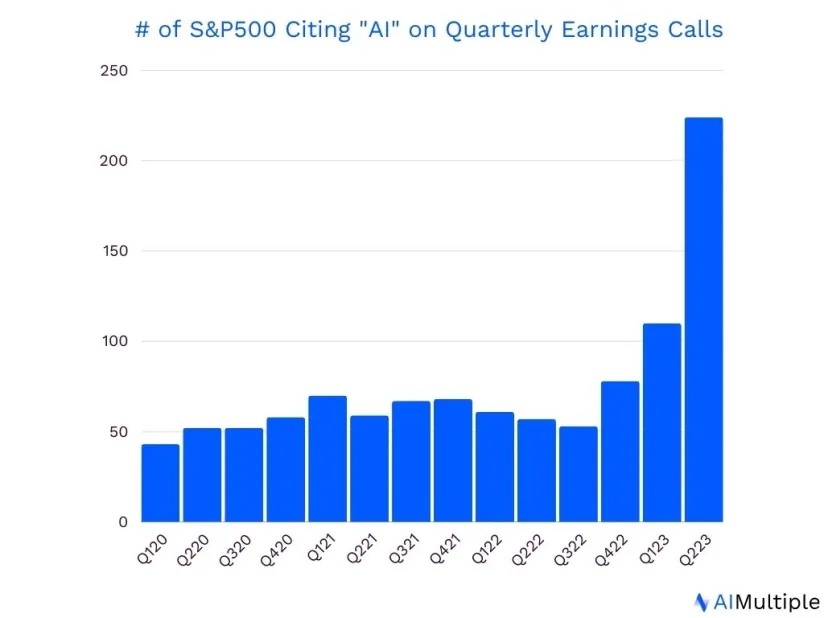
AI transformation including generative AI is one of the top priorities for CEOs. Though AI is critical for enterprises its procurement and deployment is different from software procurement which enterprises are familiar with.
Being aware of these differences and following best practices can help enterprises achieve success with AI procurement.
See below the key challenges of enterprise AI adoption and the best practices to deal with these challenges along with some real-life examples.
Enterprise AI challenges
Complex vendor landscape
Paradox of choice
There are numerous options and vendors are not clear about the technology behind their solutions. Most options are powered by the same APIs and implement superficial differences in UI.
Changing vendor landscape
AI and especially GenAI is a novel, fast evolving technology with some early winners quickly losing their first mover advantages.
Real life example: While Jasper pioneered content AI, its solution ended up being orders of magnitude more expensive than easily accessible alternatives like ChatGPT. As a result, the company needed to layoff a significant share of its workforce to preserve cash and extend its runway.
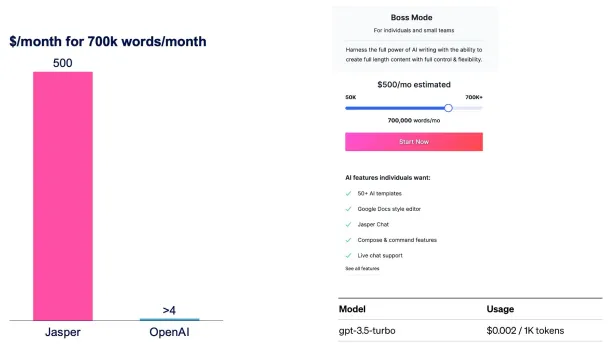
Slow PoCs
Enterprises should focus vendors or internal teams on proving the concept. Proving beyond the concept which takes longer. Most of the time integrations, user training etc. are well known and do not require proving.
Slow implementation timeframes
As in software, new GenAI projects can also take longer than expected and cost more than expected partially due to the
- novelty of the tech
- Non-deterministic nature of LLMs
- Limitations of LLMOps tools
Outdated data privacy measures
While enterprises are adapted to buying on-prem and cloud software, procurement teams are not up to date about purchasing data powered products and may not take the necessary measures of private data protection.
Real life example: A regional insurance company was sharing a spreadsheet based survey with vendors that included questions regarding data security measures. The answers were not being validated, creating risks of data leaks.
High costs
Training a model for scratch costs millions of dollars and can be exciting for LLM researchers. However, most companies can rather fine-tune existing LLMs for their use cases to achieve lower cost and faster solutions.
Performance challenges
The gap between a cool demo and a functioning product can be enormous as edge cases are harder to fix. Though self-driving cars have been right around the corner since the demos in early 2010s, they remain right around the corner in 2020s as well.
Performance challenges can be due to:
- Hallucinations
- Limited testing with your company’s data
- Unrealistic expectations
Real-life example: Every commercial LLM gets jailbroken within a matter of hours, making statements that were not intended by its developers. When Google launched its Bard bot, the question they used at launch was being wrongly answered by Bard leading to $100 billion loss in the valuation of Alphabet.1
Predictability challenges
LLMs are non-deterministic, giving different answers to inputs that are the same in meaning.
Some models provide confidence levels for their responses. In such models, if models provides wrong responses with high confidence, end users can be confused.
Model decay
In machine learning, what works today may not work tomorrow. This is because
- Underlying data changes over time
- Continuous learning can lower model performance
Enterprise AI best practices
Starting with data & use cases
Deploying machine learning solutions can be complex and need to be done in cases suitable for these solutions:
- A custom machine learning solution is not necessary without a valuable use cases that is powered by unique access to data.
- A machine learning solution is not necessary for rules based processes or processes where predictions can be made with more simplistic approaches
- A generative AI solution may not be necessary when users need to choose among a few options.
Data-driven market research
Market research can generate significant returns enabling companies:
- To work with the right providers and have future-proofed solutions
- To not miss out on existing providers. Doing so can result in building custom solutions in domains where they may not be necessary.
Rely on both current market metrics and momentum based metrics to identify top companies.
Real life example: AIMultiple brings together such metrics in vendor lists like the LLM list.
Strategically deciding between in-house vs SaaS solutions
Building in-house is harder in most cases but that is what engineers are trained to do. Businesses need to make sure that a custom solution is necessary since adopting a vendor’s solution can be significantly faster and cheaper.
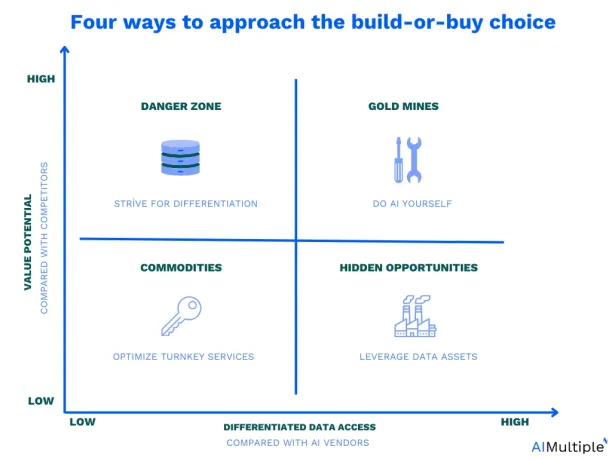
Streamlined PoC Process
- Standard PoC contracts adapted to working with AI companies (i.e. covering IP during PoC)
- Well defined POC scope for a fast, targeted PoC
Enhanced data security
Data security validation: Validating data security practices via certificates like ISO 27001 or SOC 2 or 3rd parties like Vanda.
Data risk minimization during PoCs: Leveraging private cloud PoC or sandbox / sensitive data converted to low risk format for easy sharing (e.g. homomorphic encryption, synthetic data)
Low cost experimentation
Test concepts with PoCs relying on vendor APIs and iteratively build more complex and better performing solutions.
KPIs embedded in affordable contracts
Effective pricing analysis can help eliminate vendors that follow pricing practices out of touch with the market.
Whether working with suppliers or internal technical teams, identifying the metrics for success, making them visible and having the teams commit to them can improve outcomes.
Real life example: Afiniti, a vendor that boosts outbound contact center success rates takes a commission out of its impact. This is measured by switching the system on and off regularly to identify the system’s impact.
Extensive testing over different inputs
Testing accuracy of both results and confidence levels to ensure that the model is correct when it is highly confident.
Continuous testing and monitoring can identify such performance challenges early on. LLMOps tools offer model monitoring services.
Integrating HitL & user education
Most LLM use cases involve a human in the loop (HitL) approach. Therefore, they require human operators to be aware of LLMs’ challenges.
While HitL has promise, it has its own flaws. Humans can easily get bored and rely too much on machines when machine output is correct most of the time.
Real life example: Radar operators were having a hard time identifying enemy planes on time in WW2 since it was a rare event. Shorter shifts helped improve performance. 3
Most asked questions on enterprise AI
What is enterprise AI?
Enterprise AI focuses on meeting the needs of businesses and large scale organizations by tailoring artificial intelligence (AI) technologies.Enterprise AI :
– Streamline operations
– Improve business processes
– Enhance decision-making
– Achieve specific business objectives.
What is an example of enterprise AI?
An example of Enterprise AI can be the use of an AI powered platform for customer service in large organizations. For instance, a company might implement a chatbot on its website or customer support platform that utilizes natural language processing (NLP) and machine learning algorithms to understand and respond to customer inquiries. This AI-powered chatbot can handle routine customer service tasks, provide information about products or services, and even assist in troubleshooting common issues.
This not only improves the efficiency of customer support by handling repetitive queries but also allows human customer service agents to focus on more complex and specialized tasks. Additionally, AI systems can learn from interactions over time, becoming more effective and accurate in its responses.
Other examples of Enterprise AI may include:
– Predictive analytics for inventory management
– Fraud detection systems
– Recommendation engines for personalized marketing
– Business process automation.
What are some enterprise AI solutions?
Enterprise AI platform ecosystem encompass a suite of advanced technologies and tools that leverage cutting-edge AI capabilities, such as computer vision. These solutions can
– Develop, deploy and optimize AI models
– Integrate AI services into enterprise software
– Execute and manage AI projects.
Large cloud AI platforms allow developing and deploying enterprise AI platforms. These major cloud providers offer two options for the deployment of enterprise AI:
1. Data science and machine learning platforms (DSML): These platforms offer tools to data scientists to create, deploy, and manage AI models. These tools also include MLOPs which facilitate AI model production, maintenance, and monitoring.
Some of the top vendors include Databricks, Dataiku, DataRobot, H2O.ai and Kubeflow. For more check out our data-driven and comprehensive vendor lists for data science platforms and MLOPs tools.
2. Low-code enterprise AI solutions: These are modules suitable for a broader user range. Some examples include:
– Microsoft Azure AI provides comprehensive tools, and Azure Cognitive Services offers pre-built AI modules.
– AWS has Amazon SageMaker for building AI pipelines and a set of AI services for non-experts.
– IBM’s portfolio, built on Watson technology, supports both DSML platforms and pre-built modules.
– Google cloud delivers Google AI, catering to both developers and business users.
What are some enterprise AI benefits?
Enterprise AI offers a wide range of benefits for businesses across various industries. Here are some of the key advantages:
1. Increased Efficiency:
– Automation: AI can automate repetitive and time-consuming tasks, allowing employees to focus on more complex and strategic activities.
– Process optimization: AI can analyze and optimize business processes, leading to increased efficiency and reduced operational costs.
2. Improved Decision-Making:
– Data-Driven Insights: AI analyzes large datasets to provide valuable insights, aiding in better decision-making.
– Predictive Analytics: By predicting future trends and outcomes, AI enables businesses to make proactive decisions.
3. Enhanced Customer Experience:
– Personalization: AI-driven systems can provide personalized experiences for customers, improving satisfaction and loyalty.
– Chatbots and Virtual Assistants: AI-powered chatbots can handle customer inquiries and support, providing quick responses 24/7.
4. Cost Reduction:
– Operational Efficiency: Automation and process optimization lead to cost savings by reducing manual labor and minimizing errors.
– Resource Allocation: AI helps businesses allocate resources more effectively by identifying areas where resources can be optimized.
5. Competitive Advantage:
– Innovation: Adopting AI can position a business as an innovator in its industry, gaining a competitive edge.
– Agility: AI enables businesses to adapt quickly to changing market conditions and emerging trends.
6. Risk Mitigation:
– Fraud Detection: AI can identify patterns indicative of fraudulent activities, helping prevent financial losses.
– Compliance: AI systems can assist in ensuring that business operations comply with regulatory requirements.
7. Employee Empowerment:
– Skill Augmentation: AI can augment human capabilities, allowing employees to focus on tasks that require creativity, critical thinking, and emotional intelligence.
– Training and Development: AI can facilitate employee training programs, providing personalized learning experiences.
8. Scalability:
– Handling Big Data: AI is capable of processing and analyzing vast amounts of data, enabling businesses to scale their operations without compromising efficiency.
9. Enhanced Productivity:
– Task Assistance: AI tools can assist employees by automating routine tasks, speeding up workflows, and reducing workload.
10. Strategic Insights:
– Market Analysis: AI can analyze market trends and competitor activities, providing businesses with strategic insights for decision-making.
What is enterprise AI applications?
Enterprise AI applications span a wide range of use cases across various industries. These applications leverage artificial intelligence technologies to address specific business challenges, improve efficiency, and enhance decision-making. Here are some common enterprise AI applications:
1. Customer Relationship Management (CRM): Enterprise AI enhances customer interactions and relationships by providing insights into customer behavior predict customer needs, and personalize interactions.
2. Supply Chain Management: Enterprise in supply chain and logistics operations can improve demand forecasting, inventory management, route optimization, and overall supply chain efficiency.
3. Human Resources and Recruitment:
Enterprise AI can streamline HR processes and talent acquisition by resume screening, candidate matching, employee onboarding, and workforce analytics.
4. Finance and Fraud Detection: Enterprise AI can be applied to enhance financial operations and preventing fraud by automating financial transactions, detecting anomalies in financial data, and improbing fraud detection in real-time.
5. Healthcare Diagnostics: AI can assist in medical diagnostics and treatment. Some applications include: analyzing medical images, assisting in disease diagnosis, and personalizing treatment plans based on patient data.
6. Manufacturing and Predictive Maintenance: Enterprise AI predicts equipment failures, schedules maintenance proactively, and improves overall equipment efficiency to optimize manufacturing processes and minimize downtime
7. Marketing and Personalization: Enterprise AI aims improve targeted marketing efforts and personalized customer experience by analyzing customer behavior, predicting preferences, and recommending personalized content and products.
8. Legal Document Analysis: Enterprise AI solutions can review contracts, identify relevant information, and assist legal professionals in document-intensive tasks to automate legal document review and analysis.
9. Cybersecurity: Enterprise AI analyzes network traffic patterns, identifies anomalies, and helps in real-time threat detection and response in order to identify cyber threats and enhance security measures.
10. Facility Management and Smart Buildings: Enterprise AI platforms an build operations for energy efficiency and occupant comfort by controlling building systems, monitoring energy consumption, and adjusting environmental conditions based on occupancy and usage patterns.
11. Predictive Analytics for Sales and Marketing: To improve sales forecasts and marketing strategies, enterprise AI analyzes historical data, identifies patterns, and predicts future sales trends to guide marketing campaigns.
12. E-commerce Recommendations: Enterprise AI can be applicable to enhance the online shopping experience since AI-powered recommendation engines analyze user behavior and preferences to suggest personalized product recommendations.
What is the difference between enterprise AI and generative AI?
Consumer AI and Enterprise AI differ in their focus, applications, and target users. Here are some key distinctions:
1. Focus and Purpose:
Consumer AI: Primarily designed for individual users or small groups, with a focus on enhancing personal experiences, entertainment, and daily tasks. Some examples include virtual assistants (like Siri or Alexa), recommendation systems (Netflix recommendations), and personal productivity tools.
Enterprise AI: Tailored for businesses and organizations, addressing specific business challenges, automate processes, and improve overall operational efficiency. Enterprise AI examples include supply chain optimization, customer relationship management (CRM) systems, and fraud detection in financial transactions.
2. Scope of Application:
Consumer AI: Applications are often broad and cater to a wide audience.
Emphasizes user-centric features such as voice recognition, natural language processing, and personalization.
Enterprise AI:
Applications are specific to the business context.
Emphasizes process optimization, data analytics, and automation of business functions.
3. Data and Scale:
Consumer AI:
Deals with relatively smaller datasets related to individual users.
Focuses on personal preferences and behaviors.
Enterprise AI:
Involves large datasets from various sources within the organization.
Analyzes extensive data to derive insights and support decision-making.
4. Integration with Systems:
Consumer AI:
Often standalone applications or integrated with consumer electronics and devices.
Examples include AI in smartphones, smart home devices, and personal gadgets.
Enterprise AI:
Integrates with existing enterprise systems, such as ERP, CRM, and HR systems.
Aims to work seamlessly within the organization’s existing infrastructure.
5. Customization and Complexity:
Consumer AI:
Focuses on ease of use and simplicity.
User-friendly interfaces and interactions.
Enterprise AI:
Can be more complex to meet the specific needs of diverse business processes.
Customization to align with the intricacies of organizational workflows.
6. Regulatory and Security Considerations:
Consumer AI:
May have fewer regulatory and security considerations compared to enterprise applications.
Privacy concerns are usually centered around individual users.
Enterprise AI:
Faces stringent regulatory compliance and security requirements.
Involves handling sensitive business data, requiring robust security measures.
Understanding these differences is crucial for businesses and developers to choose or develop AI solutions that align with their specific objectives and target audience, whether it’s individual consumers or the organizational environment.
What is the difference between enterprise AI and consumer AI?
AI is purposefully crafted to address challenges and enhance operations, utilizing machine learning to allow data scientists generate content. However, neither method yields favorable results for your company, and they fail to contribute to increased productivity.
Further reading
Learn more on AI technologies by checking out our comprehensive articles on AI and machine learning:
If you need more help, do not hesitate contacting us:
External sources
External Links
- 1. “Alphabet shares dive after Google AI chatbot Bard flubs answer in ad“. Reuters. February 9, 2023. Retrieved October 15, 2023
- 2. Herbert, Duranton, Steinhäuser, and Ruwolt (2018). “The Build-or-Buy Dilemma in AI.” BCG. Accessed November 24, 2023.
- 3. “Vigilance (psychology)“. Wikipedia. Retrieved October 15, 2023.

Cem has been the principal analyst at AIMultiple since 2017. AIMultiple informs hundreds of thousands of businesses (as per similarWeb) including 60% of Fortune 500 every month.
Cem's work has been cited by leading global publications including Business Insider, Forbes, Washington Post, global firms like Deloitte, HPE, NGOs like World Economic Forum and supranational organizations like European Commission. You can see more reputable companies and media that referenced AIMultiple.
Throughout his career, Cem served as a tech consultant, tech buyer and tech entrepreneur. He advised businesses on their enterprise software, automation, cloud, AI / ML and other technology related decisions at McKinsey & Company and Altman Solon for more than a decade. He also published a McKinsey report on digitalization.
He led technology strategy and procurement of a telco while reporting to the CEO. He has also led commercial growth of deep tech company Hypatos that reached a 7 digit annual recurring revenue and a 9 digit valuation from 0 within 2 years. Cem's work in Hypatos was covered by leading technology publications like TechCrunch and Business Insider.
Cem regularly speaks at international technology conferences. He graduated from Bogazici University as a computer engineer and holds an MBA from Columbia Business School.
To stay up-to-date on B2B tech & accelerate your enterprise:
Follow on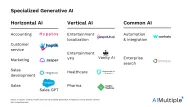
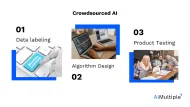
Comments
Your email address will not be published. All fields are required.